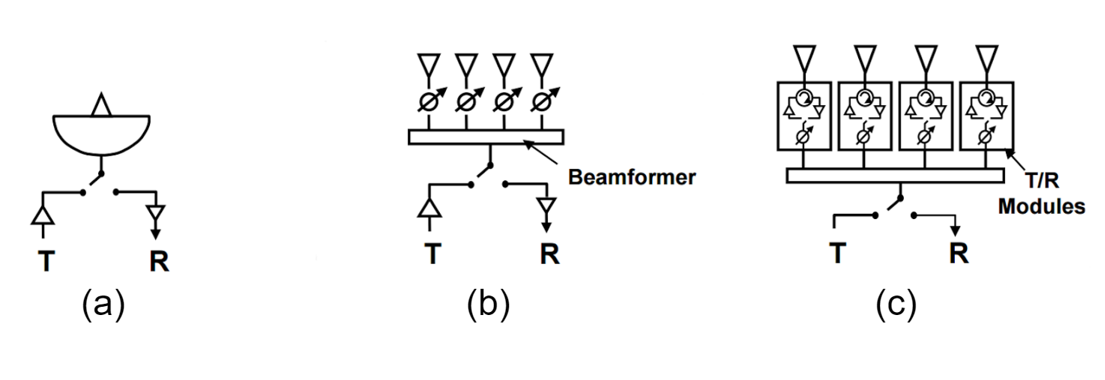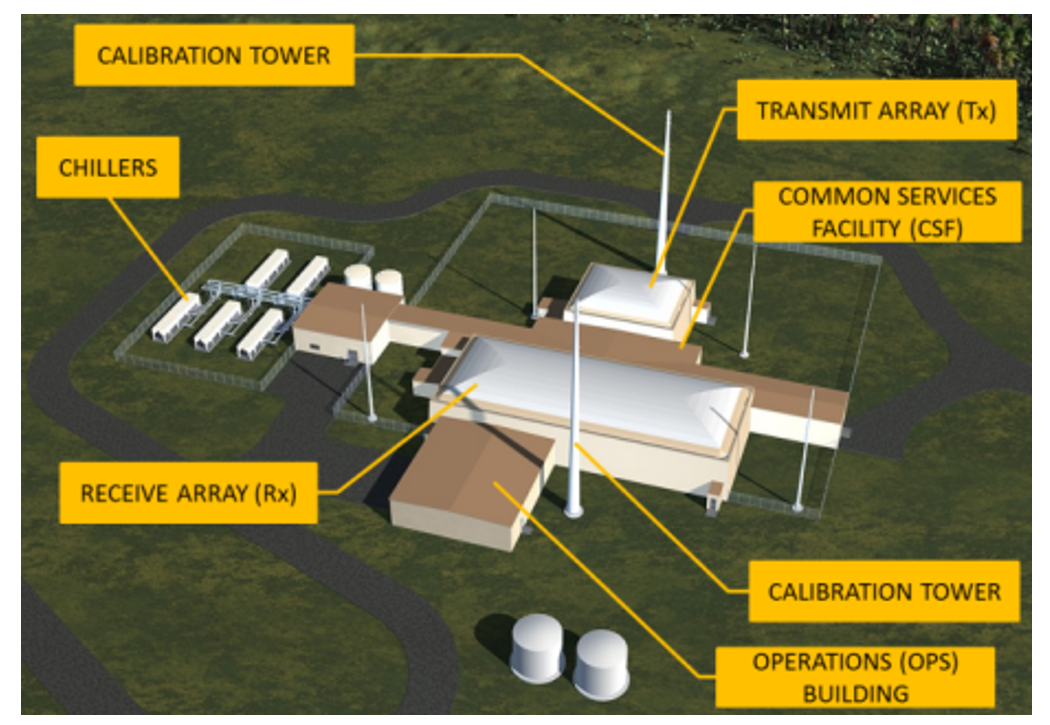Decades in the past, satellite launches required a hefty budget from the design and build of the satellite to the launching of the massive piece of equipment. Fixed service satellites (FSS) ground stations were also respectively massive, necessitating huge, failure-prone amplifiers for transmission. The entire system was essentially custom and necessarily bulky. The satellite market has recently seen a trend from fixed service satellites in geostationary orbit (GEO) to mobile service satellites (MSS) in low Earth orbit (LEO). Modern systems have scaled down quite a bit in size—trading off mission time for streamlined manufacturing and modularity.
As an example, the ground stations for the High Throughput Satellite (HTS) ViaSat series have effectively halved their antenna diameter with each new iteration of satellite thereby lessening the price per station. The cost savings have, in turn, been transferred to more ground stations where ViaSat-3 will have 20 times more corresponding ground stations than the original ViaSat-1. This is taken to another level with New Space companies such as OneWeb that promises to initially launch a 648-satellite constellation to provide coverage for over 5 million ground terminals. Companies such as SpaceX and Boeing have announced similar intentions.
A major obstacle to the commercial realization of massive constellations of small- to medium-sized satellites in LEO and MEO is designing a satellite and ground station that can reliably track these numerous and relatively fast-moving satellites with beam agility. Phased array antennas (PAA) have been seen as a key enabler to effectively handle the increased amount of LEO space traffic. According to Northern Sky Research (NSR), flat panel antennas (FPA) are poised to reach sales of $9.1 billion by 2026. Naturally, much of the revenue will be associated with the various applications that smart antennas have found its way in including cellular, automotive, and military.
What is a Phased Array Antenna?
Phased array antennas eliminate the need for the gimbal, a mechanically rotating platform often carrying a bulky parabolic dish antenna. The reason these components are employed in the first place is the extremely high gain and high directivity of the beam radiating from the antenna. It also doesn’t make sense to have a strong beam pointed in the wrong direction, thus the gimbal. The directivity of an antenna relates to the concentration of energy from the beam while the gain relates to the total power radiated from the antenna. In satellite applications, it is often necessary to have both these factors in excess to overcome the significant free space path loss to and from space.
The mechanically steered antennas have shifted toward passive electronically scanned arrays (PESA) where FPA’s incorporate an ‘array’ of antennas and each have a corresponding phase shifter. The phase shifter acts as a gimbal, steering the direction of the beam radiating from each individual element yielding an overall antenna directionality. A PESA is then inherently able to scan a piece of space much more rapidly than the mechanically steered counterpart. Still, PESA have far less beam agility than active electronically scanned arrays (AESA).
The primary difference between a PESA and an AESA stems from the transmit/receive modules (TRM). While a PESA has only one transmit and receive signal chain, the AESA has a TRM and phase shifter for every little antenna element. The most commonly used form of AESA are phased array antennas and they are far pricier with all the extra components. Since PAA’s can have hundreds to thousands of antenna elements, the size, weight, and power (SWAP) can rise up pretty rapidly forming some major barriers toward its commercialization. Still, the PAA can radiate multiple beams at multiple frequencies while the previous two iterations could generally only emit a singular beam at a singular frequency. Furthermore, the need for massive klystrons or traveling-wave tube (TWT) amplifiers and the cooling mechanisms that come with PESAs is gone—also minimizing the risk of a total system failure. The modular components in the PAA have their own individual amplifiers so any failure in each element does not shut down the entire system and are relatively simple to replace allowing for a graceful degradation.

Figure 1: (a) Mechanically steered antennas need to be physically moved to point the antenna in the desired direction; (b) PESAs leverage phase shifters for beamforming capabilities; (c) AESAs also leverage phase shifters for beamforming, the high power signals are split over thousands of individual elements thus achieving much higher powers, radar efficiency, and more modularity for implementation over different platforms. (Image Credit: OFCM)
Phased Array Radar for Clearing out Space Junk
Phased array radar has recently become more critical for space situational awareness (SSA); in particular, for space surveillance and tracking (SST). NASA estimates there are 21,000 objects of non-functional space debris larger than 10 cm in diameter orbiting Earth at around 17,000 mph. The numbers only go up for space junk of smaller diameter—there is around 500,000 particles between 1 to 10 cm in diameter and particles below 1 cm are in the tens of millions. Most of this debris is concentrated within the 500 to 530 mile altitudes; a major stumbling block for LEO constellations. Furthermore, the problem compounds with every failed launch, space explosion, and collision, generating thousands more pieces of debris to collide with and damage spacecraft; exacerbating the cycle of non-functional space junk.

Figure 2: The Earth has unusable debris orbiting the planet on the order of tens of millions where the higher diameter bits risk damaging functional satellites. (Image Credit: European Space Agency)
It’s for these very reasons that it is necessary to track the larger diameter objects. Satellites that may encounter a collision enable debris avoidance maneuvers several hours before the estimated window of risk. Many countries already have ground stations for SST, most of which leverage massive parabolic dish antennas for bistatic radar—a passive radar technique that transmits a signal to different orbital locations and gathers information from the echoes bouncing off space junk. While these methods have been helpful, phased array radar has the ability to emit multiple beams simultaneously from one antenna as opposed to multiple large and expensive reflector antennas. There have therefore been more efforts to use phased array radar for SST applications as opposed to the traditional intelligence, surveillance, reconnaissance (ISR) military applications.
The German Experimental Space Surveillance and Tracking Radar (GESTRA) was a project launched in 2014 by the Federal Ministry for Economic Affairs and Energy (BMWi) of Germany to track objects in LEO. The Fraunhofer Institute for High Frequency Physics and Radar Techniques (FHR) received a €25 million grant and is using phased array radar to pick up satellite and space debris in a number of different directions at once. The system will use a quasi-monostatic radar technique in the L-band (1.3 GHz) with 256 TRMs. Early last year, LeoLabs completed the Midland Space Radar (MSR)—a proprietary phased array radar with over 100 antenna elements that can track up to 1,500 pieces of debris per hour—apparently bringing their coverage of objects in LEO to 95 percent.

Figure 3: Lockheed Martin’s Space Fence Program incorporates a massive PAA with thousands of transmit and receive elements for high resolution tracking of space debris. (Image Credit: Lockheed Martin)
The $1.6 billion project, Space Fence, has been in the works for a few years now and is currently under construction in the Marshall Islands and Australia. This SSA technology leverages two of the largest phased arrays ever to be constructed with the receiver alone at around 7,000 square feet, containing 86,000 receive elements. The ground-based system of S-band radars is primarily aimed at detecting and tracking objects with diameters as low as 4 inches in LEO but has capabilities in MEO and GEO. This high-resolution radar is accomplished with a number of newer technologies including GaN-based power amplifiers and dual-polarized radio frequency integrated circuits (RFIC) receivers. This essentially increases the integration and power density of an already massive system, allowing for a large coverage volume with simultaneous search and track functionalities.
Phased Array Antenna: Next Steps for Space
With talk of massive LEO and MEO constellations comprising of thousands of communications satellites and ground station antennas with a high scan agility are necessary. The technology that is currently under construction for cataloging space junk can be utilized for tracking the high speed LEO satellites to keep up with the frequent handovers; ultimately meeting the increasing Quality of Service (QoS) criteria. Moreover, the ability to radiate multiple simultaneous beams can potentially drive down the perceived high upfront cost of the PAA when viewed on a cost-per-beam basis.
There are a number of manufacturers that have already begun manufacturing K-, Ka-, and Ku-band PAAs for mobile and satellite applications including Phasor, C-COM, Gilat, and Boeing. Satellites such as the Eutelsat Quantum plan on implementing PAAs to enable remote reconfigurability where the satellite can adjust its coverage and capacity to suit changing customer needs. This is a vast improvement over previous technologies where a customer would typically purchase a dedicated block of satellite bandwidth whether or not there is excess capacity; potentially wasting a valuable commodity. This can also be beneficial in the changing wireless landscape where there is a demand for higher throughputs without the infrastructure to back it. Satellite backhaul can allow for connectivity globally so long as there is flexibility in bandwidth and coverage; concepts that PAAs can enable.
Filed Under: Aerospace + defense




